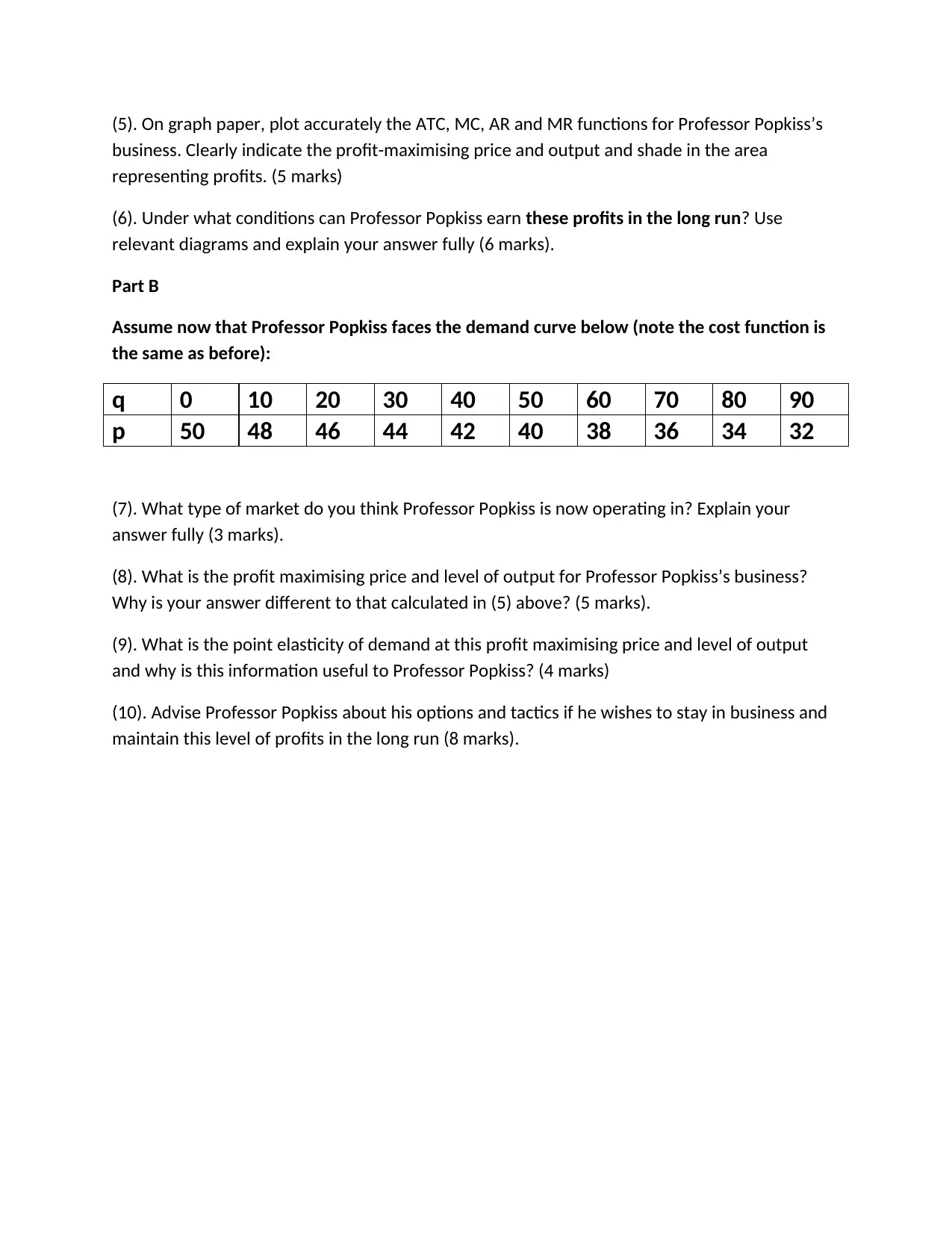Business Economics Report: Assessing a Business's Market and Profits
VerifiedAdded on 2019/09/16
|2
|568
|156
Report
AI Summary
This report delves into the economic analysis of Professor Popkiss's clock and watch repair business. Part A examines the market structure, cost functions, and profit maximization strategies under specific market conditions. It involves calculating total revenue, marginal revenue, total costs, average costs, and marginal costs to determine the optimal output level. The report also analyzes the shape of the short-run ATC curve and the conditions for long-run profitability, using relevant diagrams to illustrate the concepts. Part B introduces a different demand curve, altering the market structure and requiring a re-evaluation of profit-maximizing price and output. The report calculates the point elasticity of demand and provides advice on long-run business strategies to maintain profit levels. The analysis provides a comprehensive understanding of market dynamics, cost structures, and profit maximization in the context of a small business.
1 out of 2




![[object Object]](/_next/static/media/star-bottom.7253800d.svg)